Starting an online business is all the rage these days, and you may want to join the fun as quickly as possible. But it may not be a bad idea to consider more traditional options. As more and more entrepreneurs jump online, competition in the e-commerce space is getting intense.
That’s why starting a pressure washing business could be a smart alternative. Margins are high, so profits can be considerable. And by starting a local business you can build stronger community ties and become the go-to option in your area.
But as with any worthwhile endeavor, starting a pressure washing business takes a lot of hard work and know-how. This step-by-step guide will walk you through the development and launch process and provide all the answers you need to start making real money!
Step 1: Decide if the Business is Right for You
Pressure washing, which is also known as power washing, refers to the use of a high-pressure water stream to remove loose paint, mold, grime, mud, and other unwanted substances from buildings, vehicles, and hard surfaces.
In this section, we’ll touch on the different types of pressure washing businesses, their pros and cons, industry trends, and more. Let’s get started!
Pros and cons
Whenever you start a business, it’s important to have a balanced view of the positives and negatives associated with it. Here are the pros and cons we believe are important.
Pros
- Start-up costs are relatively low
- Relevant technical skills can be learned on the job
- Simple and straightforward business model
- Many niche options for specialization
- Demand is steady as surfaces will always need cleaning
- Profit margins are high
Cons
- Local competition can be high
- Managing staff can be difficult
- Physically demanding work
- Gaining recognition can take time
Pressure washing industry trends
Before you can start washing those surfaces, it’s important to get a feel for the industry.
Industry size and growth
Trends and challenges
Trends in the pressure washing industry include:
- Increasing use of technology
- Health and safety regulations due to pandemic are fueling demand
- Increasing number of houses and cars
The industry faces some challenges like:
- High risk of injuries
- Emergence of alternative cleaning technology
Consumer spending
What kind of people work in the pressure washing industry?
- Gender – Nearly 94% are men and the rest are women.
- Average level of education – More than half of pressure washers finished high school. Pressure washers don’t need a college degree.
- Average age – The average age of pressure washers is 38 years.((https://www.zippia.com/pressure-washer-jobs/))
How much does it cost to start a pressure washing business?
Depending on your vision, your startup costs can be relatively low. But for certain niches such as industrial washing, you may need pricier specialized equipment. Here is a breakdown of expected startup costs.
Starting a pressure washing business could cost as little as $11,000 if you are bootstrapping, or over $50,000 if you invest in a new vehicle for your business.
| Start-up Costs | Ballpark Range | Average |
| Power washing equipment | $1,000 - $1,500 | $1,250 |
| Premium pressure washer | $2,000 - $6,000 | $4,000 |
| Truck or van | $6,000 - $40,000 | $23,000 |
| Custom vehicle graphics | $1,600 - $1,800 | $1,700 |
| Insurance, license, and permits | $500 - $500 | $500 |
| Monthly insurance | $60 - $2,000 | $1,300 |
| Advertising and marketing | $250 - $500 | $375 |
| Total | $11,410 - $52,300 | $32,125 |
How much can you earn from a pressure washing business?
Pressure washing costs between $60 and $100 per hour. It usually takes up to six hours to pressure wash a 1,200 square foot house. Pressure washing the driveway only would take an hour, while a roof, deck, or patio would take two to three hours.
In your first year or two, you could work for up to six hours a day for three days a week and get paid $60 per hour, bringing in around $56,000 in annual revenue. This would mean around $45,000 in profit, assuming an 80% margin.
As you find more clients, you could extend operating hours to eight in a day for six days a week and charge an average of $80 per hour. At this stage, you’d need to hire staff, invest in additional equipment and rent a commercial space, reducing your profit margin to around 40%. With annual revenue of almost $200,000, you’d make a tidy profit of around $80,000.
What barriers to entry are there?
Your biggest challenges in setting up a pressure washing business are:
- Stringent safety regulations
- Differentiating your business from the competition
- Need to obtain licenses and permits
Related Business Ideas
If you’re still not sure whether this business idea is the right choice for you, here are some related business opportunities to help you on your path to entrepreneurial success.
Step 2: Hone Your Idea
Now that you understand a bit more about the industry, it’s time to start researching your particular market. This will include choosing your niche, the location of your business, and getting to know your competition.
Why? Identify an opportunity
A key factor driving growth is broader interest in pressure washing, as opposed to traditional methods, for car washing, pool cleaning, and floor cleaning.
You might consider targeting a niche market. A pressure washing business might seem like a niche in itself but there are sub-niches within it.
- Domestic – specializes in car, garden, or home exterior washing; customers will mostly be owners of single-family homes
- Commercial and industrial – targets commercial and/or industrial businesses, such as a mall, residential towers or factories
What? Determine your products or services
Knowing your niche will help you plan on who to target. Each of these niches also come with their pros and cons so you need to understand them before you choose one.
For example, targeting industrial clients will mean that you need specialized equipment and to hire a team since factories are usually large.
If you choose car washing, it may not be as lucrative as some vehicle owners wash their own cars to save money, which means less demand. You’ll need to decide which niche works best for you.
How much should you charge for pressure washing services?
To figure this out you can look at what competitors are charging for a similar service. But if you don’t have any local competitors you can always do a quick Google search to see what businesses outside your area are charging.
Once you have an idea of market prices you should then work out your break-even point. To do this, first figure out how much it costs you to provide your service, including expenses for transport, equipment, and labor.
Once you know your costs, add your margin and find your final price using this Step By Step profit margin calculator.
Who? Identify your target market
Identifying your target market is crucial for your marketing efforts. If you don’t know who you’re targeting, you’ll never get the results that you want. But how can you identify your target market?
Let’s use an example focused on a residential niche. If you offer home exterior cleaning, it’s a good idea to target customers with lots of disposable income. To do this, you can target wealthy suburbs or focus on larger houses and double-story homes.
Once you’ve chosen your niche, brainstorm who your perfect customer would be and make that your target market.
Where? Choose your business premises
Will your business have a fixed location such as a car wash or an office? Or will you start your business from home and travel to your customers?
These days, it’s easier than ever to advertise your business online. So in the beginning, you can easily keep your startup costs low by using a home office.
You’ll need to figure this out before you apply for any licenses and permits or register your business, as you’ll need to include your address on these applications.
When choosing a commercial space, you may want to follow these rules of thumb:
- Central location accessible via public transport
- Ventilated and spacious, with good natural light
- Flexible lease that can be extended as your business grows
- Ready-to-use space with no major renovations or repairs needed
Step 3: Brainstorm a Business Name
Your business name is your business identity, so choose one that encapsulates your objectives, services, and mission in just a few words. You probably want a name that’s short and easy to remember, since much of your business, and your initial business in particular, will come from word-of-mouth referrals.
Here are some ideas for brainstorming your business name:
- Short, unique, and catchy names tend to stand out
- Names that are easy to say and spell tend to do better
- The name should be relevant to your product or service offerings
- Ask around — family, friends, colleagues, social media — for suggestions
- Including keywords, such as “washing” or “pressure”, boosts SEO
- Choose a name that allows for expansion: “Jim’s Bakery” over “Jim’s Cookies”
- Avoid location-based names that might hinder future expansion
- Use online tools like the Step by Step business name generator. Just type in a few keywords and hit “generate” and you’ll have dozens of suggestions at your fingertips.
Once you’ve got a list of potential names, visit the website of the US Patent and Trademark Office to make sure they are available for registration and check the availability of related domain names using our Domain Name Search tool. Using “.com” or “.org” sharply increases credibility, so it’s best to focus on these.
Finally, make your choice among the names that pass this screening and go ahead with domain registration and social media account creation. Your business name is one of the key differentiators that set your business apart. Once you pick your company name, and start with the branding, it is hard to change the business name. Therefore, it’s important to carefully consider your choice before you start a business entity.
Step 4: Create a Business Plan
Every business needs a plan. This will function as a guidebook to take your startup through the launch process and maintain focus on your key goals. A business plan also enables potential partners and investors to better understand your company and its vision:
- Executive Summary: Brief overview of the entire business plan; should be written after the plan is complete.
- Business Overview: Overview of the company, vision, mission, ownership, and corporate goals.
- Product and Services: Describe your washing services in detail.
- Market Analysis: Assess market trends such as variations in demand and prospects for growth, and do a SWOT analysis.
- Competitive Analysis: Analyze main competitors, assess their strengths and weaknesses, and create a list of the advantages of your services.
- Sales and Marketing: Examine your companies’ unique selling propositions (USPs) and develop sales, marketing, and promotional strategies.
- Management Team: Overview of management team, detailing their roles and professional background, along with a corporate hierarchy.
- Operations Plan: Your company’s operational plan includes procurement, office location, key assets and equipment, and other logistical details.
- Financial Plan: Three years of financial planning, including startup costs, break-even analysis, profit and loss estimates, cash flow, and balance sheet.
- Appendix: Include any additional financial or business-related documents.
If you’ve never created a business plan, it can be an intimidating task. You might consider hiring a business plan specialist at Fiverr to create a top-notch business plan for you.
Step 5: Register Your Business
Registering your business is an absolutely crucial step — it’s the prerequisite to paying taxes, raising capital, opening a bank account, and other guideposts on the road to getting a business up and running.
Plus, registration is exciting because it makes the entire process official. Once it’s complete, you’ll have your own business!
Choose where to register your company
Your business location is important because it can affect taxes, legal requirements, and revenue. Most people will register their business in the state where they live, but if you are planning to expand, you might consider looking elsewhere, as some states might offer real advantages when it comes to pressure washing.
If you’re willing to move, you could really maximize your business! Keep in mind, it’s relatively easy to transfer your business to another state.
Choose your business structure
Business entities come in several varieties, each with its pros and cons. The legal structure you choose for your pressure washing business will shape your taxes, personal liability, and business registration requirements, so choose wisely.
Here are the main options:
- Sole Proprietorship – The most common structure for small businesses makes no legal distinction between company and owner. All income goes to the owner, who’s also liable for any debts, losses, or liabilities incurred by the business. The owner pays taxes on business income on his or her personal tax return.
- General Partnership – Similar to a sole proprietorship, but for two or more people. Again, owners keep the profits and are liable for losses. The partners pay taxes on their share of business income on their personal tax returns.
- Limited Liability Company (LLC) – Combines the characteristics of corporations with those of sole proprietorships or partnerships. Again, the owners are not personally liable for debts.
- C Corp – Under this structure, the business is a distinct legal entity and the owner or owners are not personally liable for its debts. Owners take profits through shareholder dividends, rather than directly. The corporation pays taxes, and owners pay taxes on their dividends, which is sometimes referred to as double taxation.
- S Corp – An S-Corporation refers to the tax classification of the business but is not a business entity. An S-Corp can be either a corporation or an LLC, which just need to elect to be an S-Corp for tax status. In an S-Corp, income is passed through directly to shareholders, who pay taxes on their share of business income on their personal tax returns.
We recommend that new business owners choose LLC as it offers liability protection and pass-through taxation while being simpler to form than a corporation. You can form an LLC in as little as five minutes using ZenBusiness’s online LLC formation service. They will check that your business name is available before filing, submit your articles of organization, and answer any questions you might have.
Step 6: Register for Taxes
The final step before you’re able to pay taxes is getting an Employer Identification Number, or EIN. You can file for your EIN online or by mail or fax: visit the IRS website to learn more. Keep in mind, if you’ve chosen to be a sole proprietorship you can simply use your social security number as your EIN.
Once you have your EIN, you’ll need to choose your tax year. Financially speaking, your business will operate in a calendar year (January–December) or a fiscal year, a 12-month period that can start in any month. This will determine your tax cycle, while your business structure will determine which taxes you’ll pay.
It is important to consult an accountant or other professional to help you with your taxes to ensure you are completing them correctly.
Step 7: Fund your Business
Securing financing is your next step and there are plenty of ways to raise capital:
- Bank loans: This is the most common method, but getting approved requires a rock-solid business plan and strong credit history.
- SBA-guaranteed loans: The Small Business Administration can act as guarantor, helping gain that elusive bank approval via an SBA-guaranteed loan.
- Government grants: A handful of financial assistance programs help fund entrepreneurs. Visit Grants.gov to learn which might work for you.
- Venture capital: Offer potential investors an ownership stake in exchange for funds, keeping in mind that you would be sacrificing some control over your business.
- Crowdfunding: Websites like Kickstarter and Indiegogo offer an increasingly popular low-risk option, in which donors fund an entrepreneur’s vision.
- Personal: Self-fund your business via your savings, the sale of property or other assets, and support from family and friends.
Bank and SBA loans are probably the best options, other than friends and family, for funding a pressure washing business.
Step 8: Apply for Licenses/Permits
Starting a pressuring washing business requires obtaining a number of licenses and permits from local, state, and federal governments.
Federal regulations, licenses, and permits associated with starting your business include doing business as, health license and permit from the Occupational Safety and Health Administration (OSHA), trademarks, copyrights, patents, and other intellectual properties, as well as industry-specific licenses and permits.
You may also need state-level licenses and local county or city-based licenses and permits. The license requirements and how to obtain them vary, so check the websites of your state, city, and county governments or contact the appropriate person to learn more. You could also check this SBA guide for your state’s requirements.
This is not a step to be taken lightly, as failing to comply with legal requirements can result in hefty penalties.
If you feel overwhelmed by this step or don’t know how to begin, it might be a good idea to hire a professional to help you check all the legal boxes.
For peace of mind and to save time, we recommend using MyCorporation’s Business License Compliance Package. They will research the exact forms you need for your business and state, and provide them to you to make sure you’re fully compliant.
Step 9: Open a Business Bank Account
Before you start making money you’ll need a place to keep it, and that requires opening a bank account.
Keeping your business finances separate from your personal account makes it easy to file taxes and track your company’s income, so it’s worth doing even if you’re running your pressure washing business as a sole proprietorship. Opening a business bank account is quite simple, and similar to opening a personal one. Most major banks offer accounts tailored for businesses — just inquire at your preferred bank to learn about rates and features.
Banks vary in terms of offerings, so it’s a good idea to examine your options and select the best plan for you. Once you choose your bank, bring in your EIN (or Social Security Number if you decide on a sole proprietorship), articles of incorporation, and other legal documents and open your new account.
Step 10: Get Business Insurance
Business insurance is an area that often gets overlooked yet it can be vital to your success as an entrepreneur. Insurance protects you from unexpected events that can have a devastating impact on your business.
Here are some types of insurance to consider:
- General liability: The most comprehensive type of insurance, acting as a catch-all for many business elements that require coverage. If you get just one kind of insurance, this is it. It even protects against bodily injury and property damage.
- Business Property: Provides coverage for your equipment and supplies.
- Equipment Breakdown Insurance: Covers the cost of replacing or repairing equipment that has broken due to mechanical issues.
- Worker’s compensation: Provides compensation to employees injured on the job.
- Property: Covers your physical space, whether it is a cart, storefront, or office.
- Commercial auto: Protection for your company-owned vehicle.
- Professional liability: Protects against claims from a client who says they suffered a loss due to an error or omission in your work.
- Business owner’s policy (BOP): This is an insurance plan that acts as an all-in-one insurance policy, a combination of any of the above insurance types.
Step 11: Prepare to Launch
As opening day nears, prepare for launch by reviewing and improving some key elements of your business.
Essential software and tools
Being an entrepreneur often means wearing many hats, from marketing to sales to accounting, which can be overwhelming. Fortunately, many websites and digital tools are available to help simplify many business tasks.
Software tools that can help you run your pressure washing business include Vonigo, Service Monster, and Smart Service.
Accounting
- Popular web-based accounting programs for smaller businesses include Quickbooks, Freshbooks, and Xero.
- If you’re unfamiliar with basic accounting, you may want to hire a professional, especially as you begin. The consequences for filing incorrect tax documents can be harsh, so accuracy is crucial.
Marketing
Some of your business will come from the casual passerby or online visitors, but still you should invest in digital marketing! Getting the word out is especially important for new businesses, as it’ll boost customer and brand awareness.
It’s also to your advantage to join a trade association such as the Power Washers of North America.
Once your website is up and running, link it to your social media accounts and vice versa. Social media is a great tool for promoting your business because you can create engaging posts that advertise your products:
- Facebook: Great platform for paid advertising, allows you to target specific demographics, like men under age 50 in the Cleveland area.
- Instagram: Same benefits as Facebook but with different target audiences.
- Website: SEO will help your website appear closer to the top in relevant search results, a crucial element for increasing sales. Make sure that you optimize calls to action on your website. Experiment with text, color, size, and position of calls to action such as “Call Now”. This can sharply increase purchases.
- Google and Yelp: For businesses that rely on local clientele, getting listed on Yelp and Google My Business can be crucial to generating awareness and customers.
Kickstart Marketing
Take advantage of your website, social media presence and real-life activities to increase awareness of your offerings and build your brand. Some suggestions include:
- Signage – Put up eye-catching signage at your store and website
- Flyering – Distribute flyers in your neighborhood and at industry events
- In-Person Sales – Offer your pressure washing services at local markets, trade shows
- Sponsor events – You can pay to be a sponsor at events that are relevant to your target market
- Post a video – Post a video about your pressure washing services. Use humor and maybe it will go viral!
- Email marketing/newsletter – Send regular emails to customers and prospects. Make them personal.
- Start a blog – Start a blog and post regularly. Change up your content and share on multiple sites.
- Seek out referrals – Offer incentives to generate customer referrals to new clients.
- Paid ads on social media – Choose sites that will reach your target market and do targeted ads
Develop your website
Website development is crucial because your site is your online presence and needs to convince prospective clients of your expertise and professionalism. They are unlikely to find your website, however, unless you follow Search Engine Optimization (SEO) practices. These are steps that help pages rank higher in the results of top search engines like Google.
You can create your own website using services like WordPress, Webflow, or Squarespace. This route is very affordable, but figuring out how to build a website can be time-consuming. If you lack tech-savvy, you can hire a web designer or developer to create a custom website for your business.
Focus on USPs
Unique selling propositions, or USPs, are the unique characteristics of a product or service that sets it apart from the competition. Customers today are inundated with buying options, so you’ll have a real advantage if they are able to quickly grasp how your pressure washing business meets their needs or wishes. It’s wise to do all you can to ensure your USPs stand out on your website and in your marketing, stimulating buyer desire.
Global pizza chain Domino’s is renowned for its USP: “Hot pizza in 30 minutes or less, guaranteed. Some signature USPs for your business could be:
- Fastest, most efficient pressure washing in the area
- The most advanced equipment and technicians
- Best prices in town!
- Added services such as gutter cleaning, car waxing
Step 12: Build Your Team
If you’re starting out small from a home office, you’ll need to handle all the duties involved with the business. These include marketing, administration, transportation, inventory management, and the actual cleaning. You’ll be doing things like talking to clients, accounting, and sending invoices.
But as your business grows, you will likely need workers to fill various roles. Potential positions for a pressure washing business would include:
- Pressure washers — Washing surfaces, maintaining equipment
- Office Manager — Scheduling, staffing, customer service
- Marketing Lead — SEO optimization, social media strategy
At some point, you may need to hire all of these positions or simply a few, depending on the size and needs of your business. You might also hire multiple workers for a single role or a single worker for multiple roles, again depending on need.
Free-of-charge methods to recruit employees include posting ads on popular platforms such as LinkedIn or Facebook. You can also use free classified sites like Jobs and AngelList. You might also consider a premium recruitment option, such as advertising on Indeed, Glassdoor, or ZipRecruiter. Further, if you have the resources, you could consider hiring a recruitment agency to help you find talent.
Step 13: Start Making Money!
And that’s the complete Step-By-Step guide to starting a pressure washing business. If you’ve made it this far, then you know exactly what you need to do to get started. You can start small and keep your investment to a minimum by offering your services to your neighbors and friends.
Having excellent networking skills would get you more clients and enable you to gradually expand your area of business. The challenge is to build a pool of loyal clients, and this is possible if you deliver consistently great service. It’s time to take the first step in your entrepreneurial journey. Good luck!
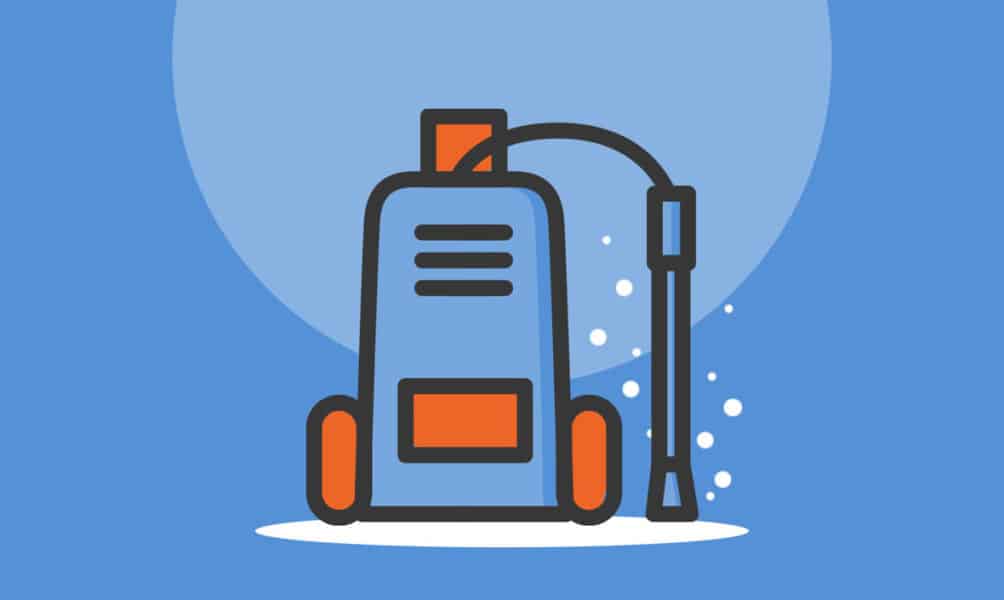

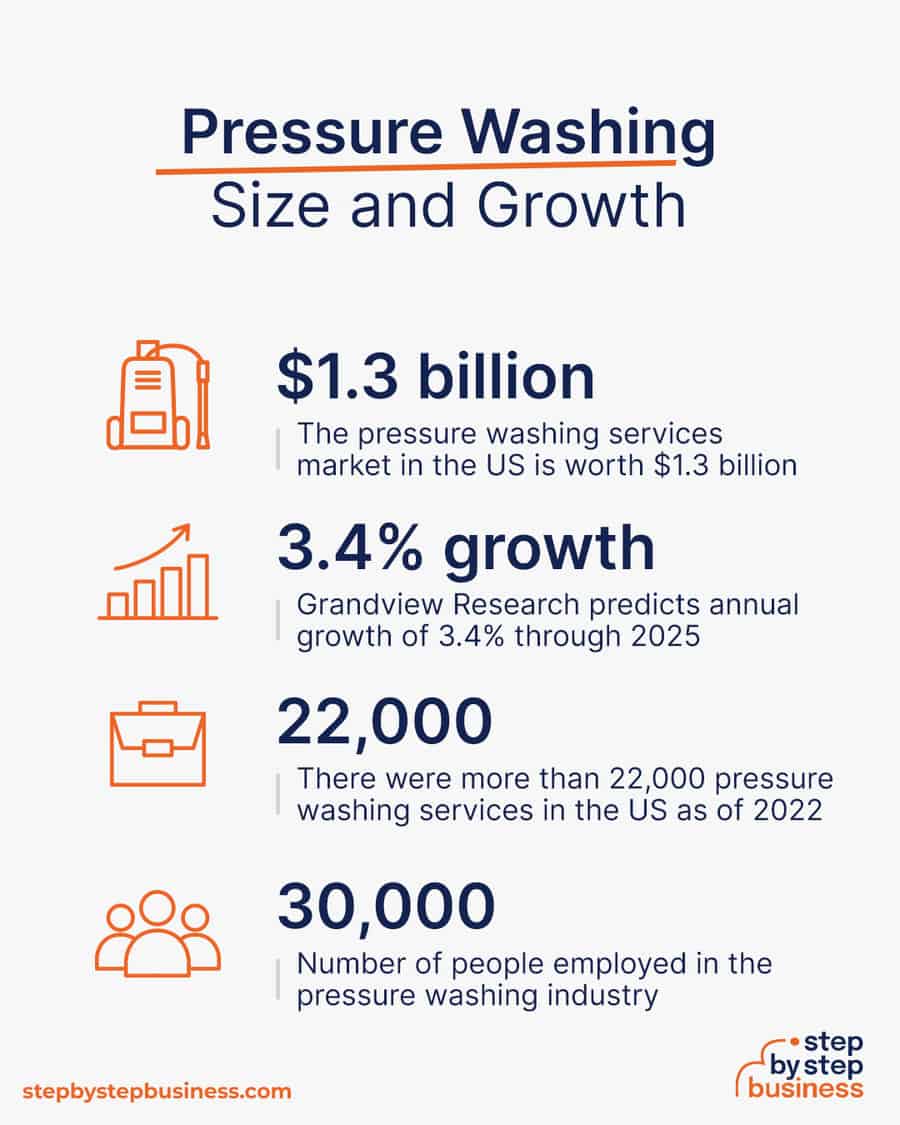
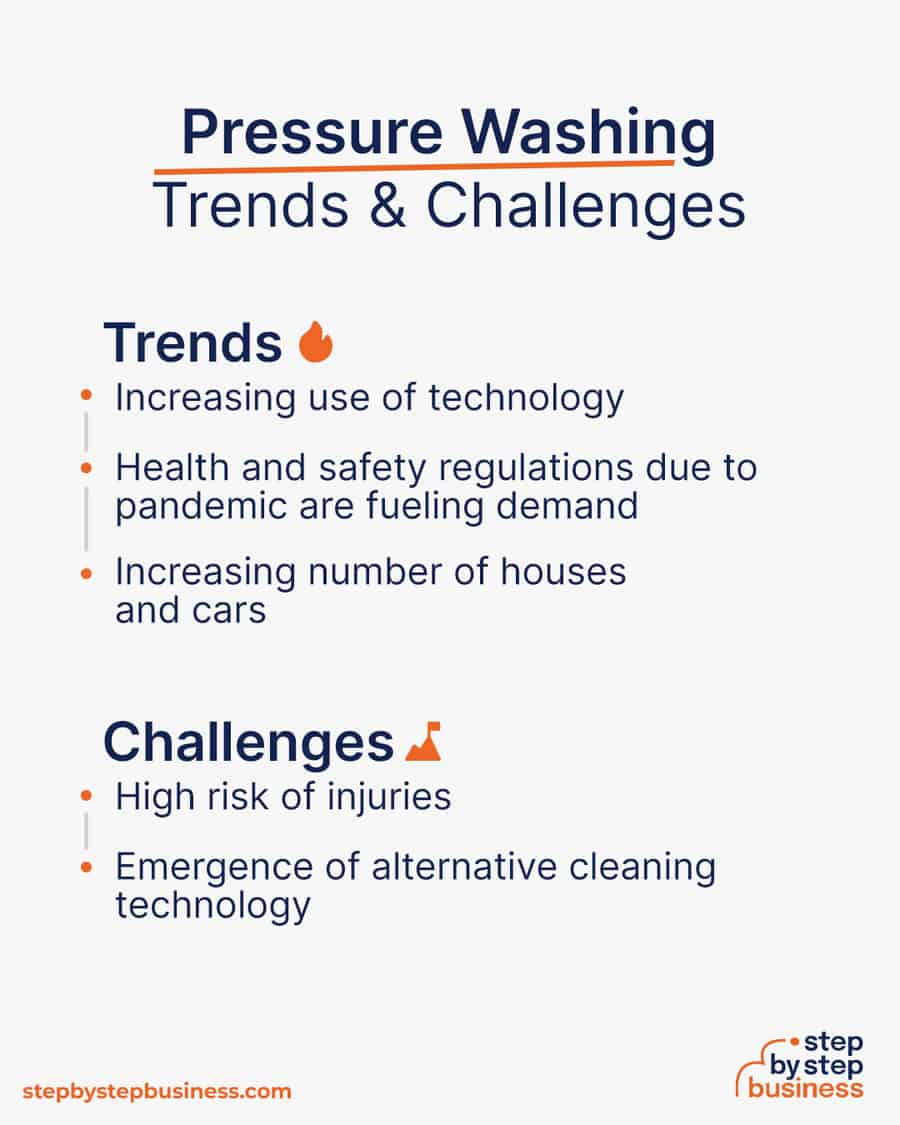
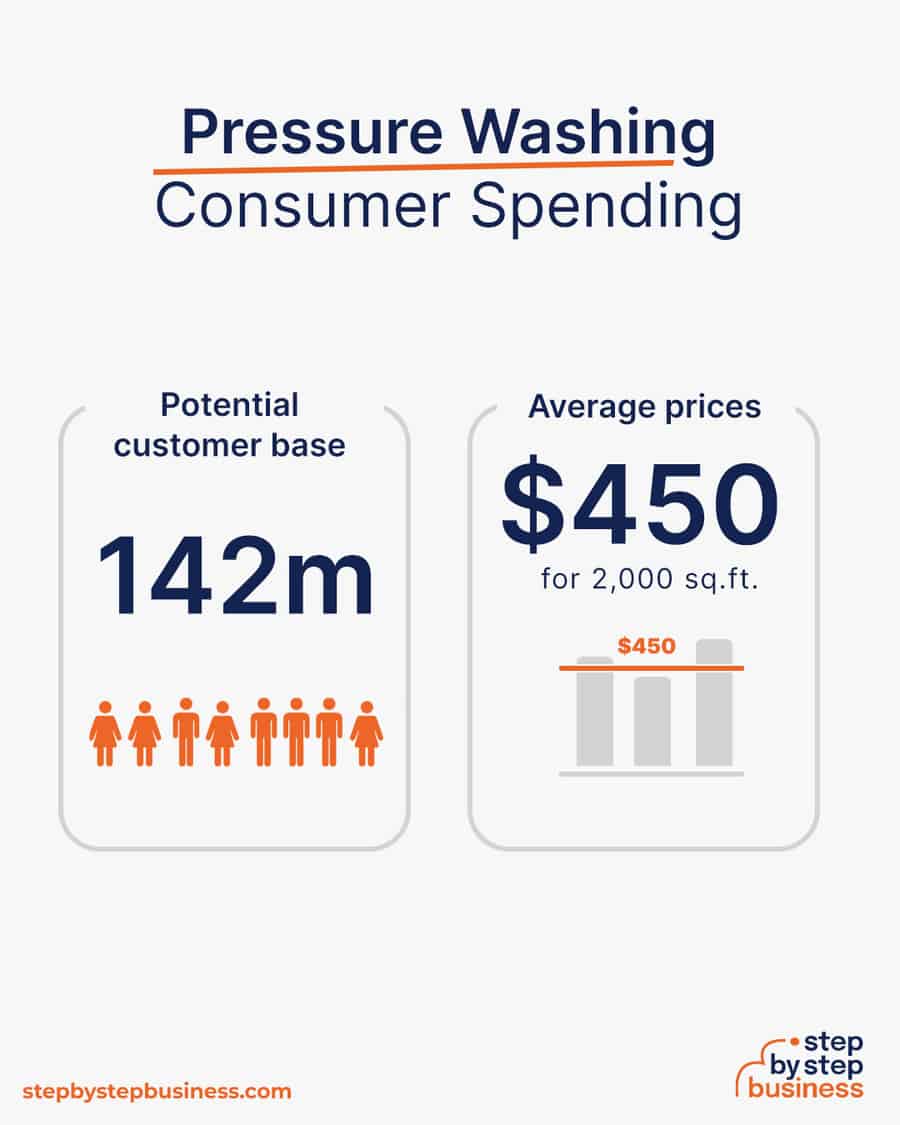
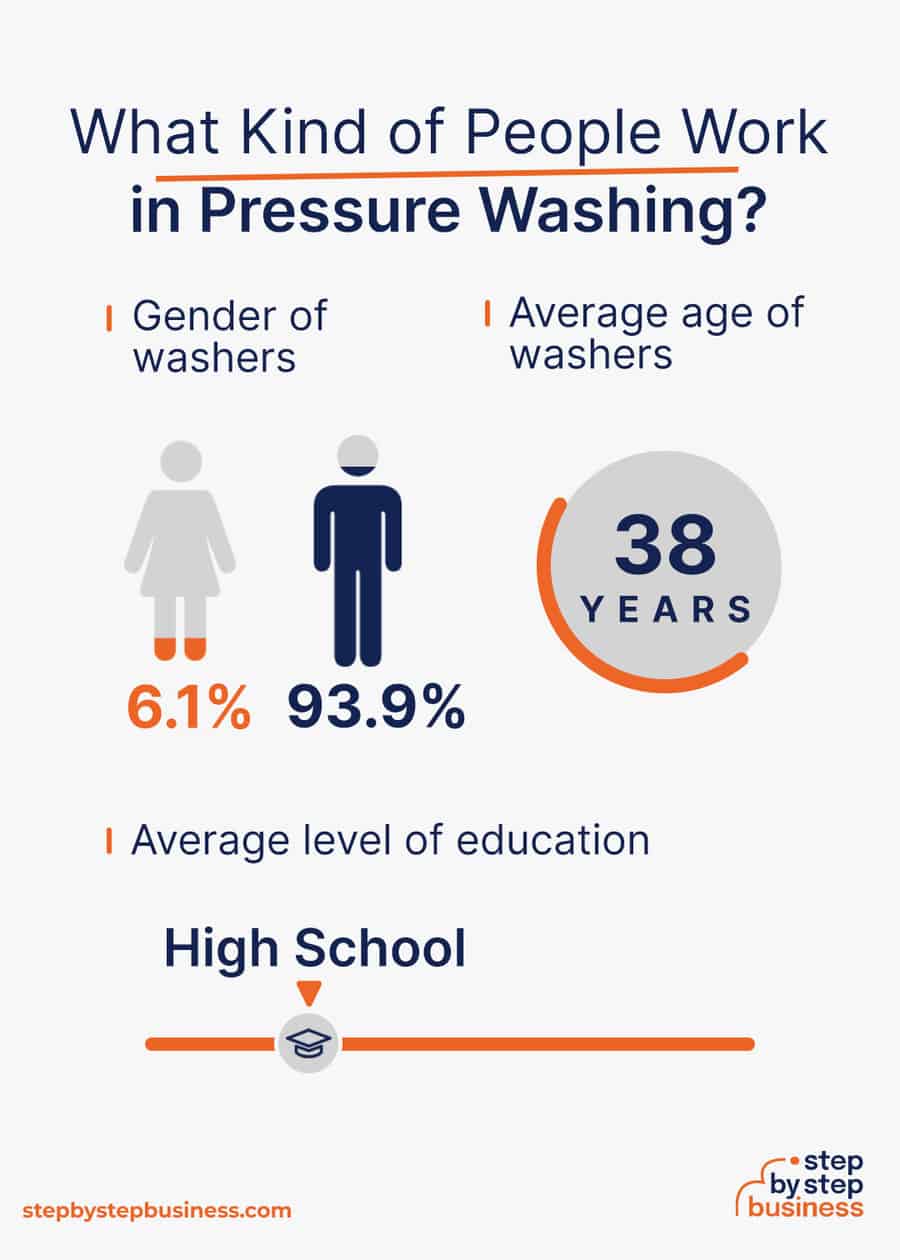
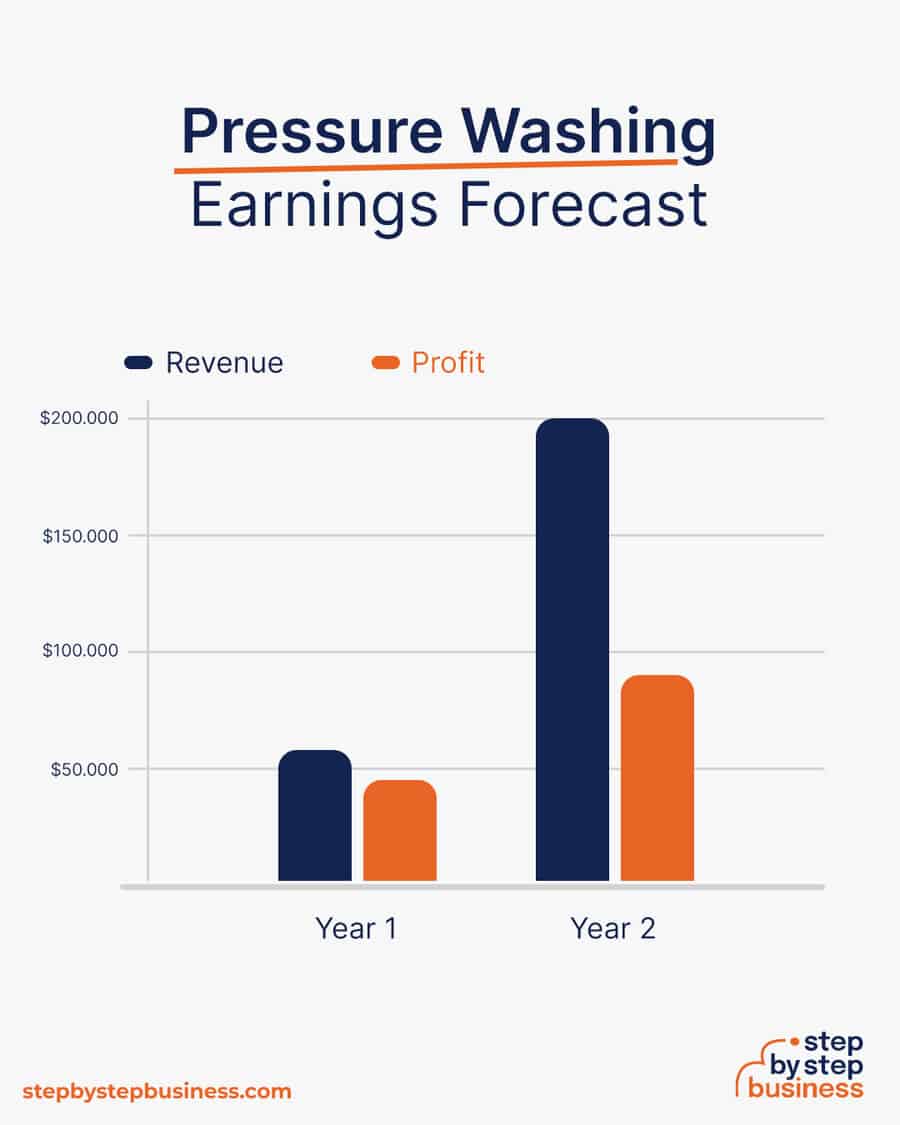
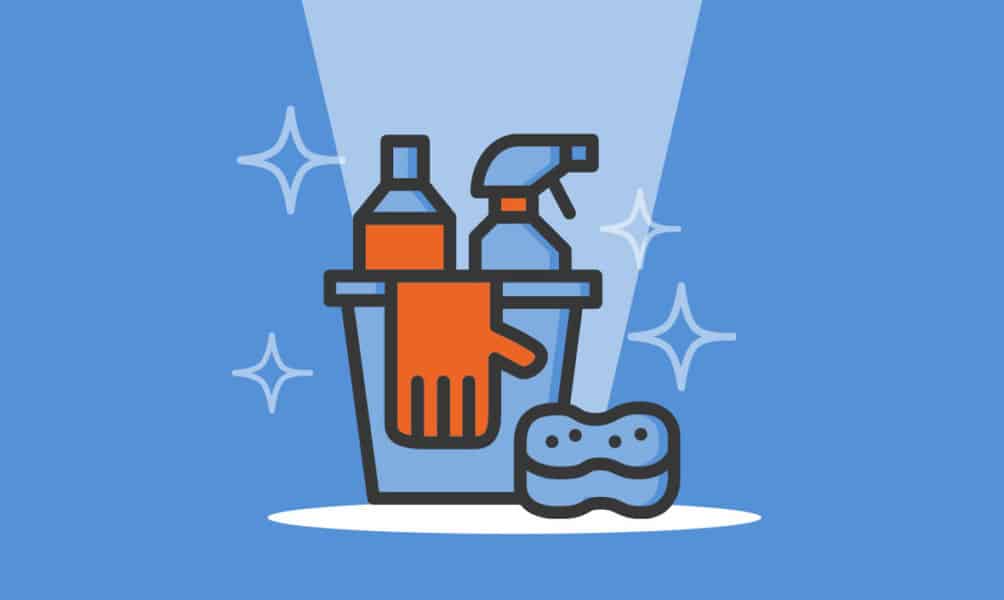
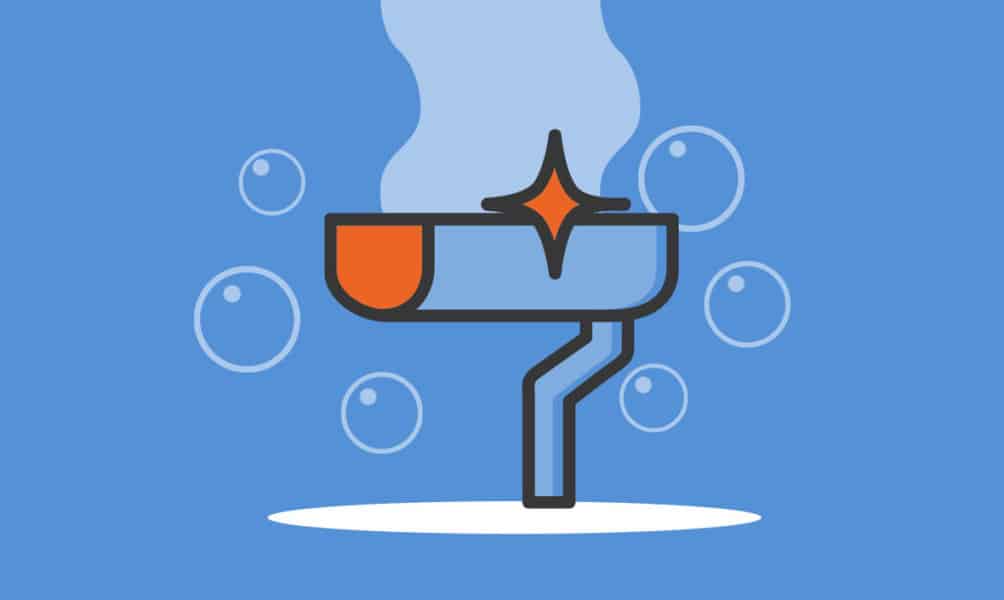


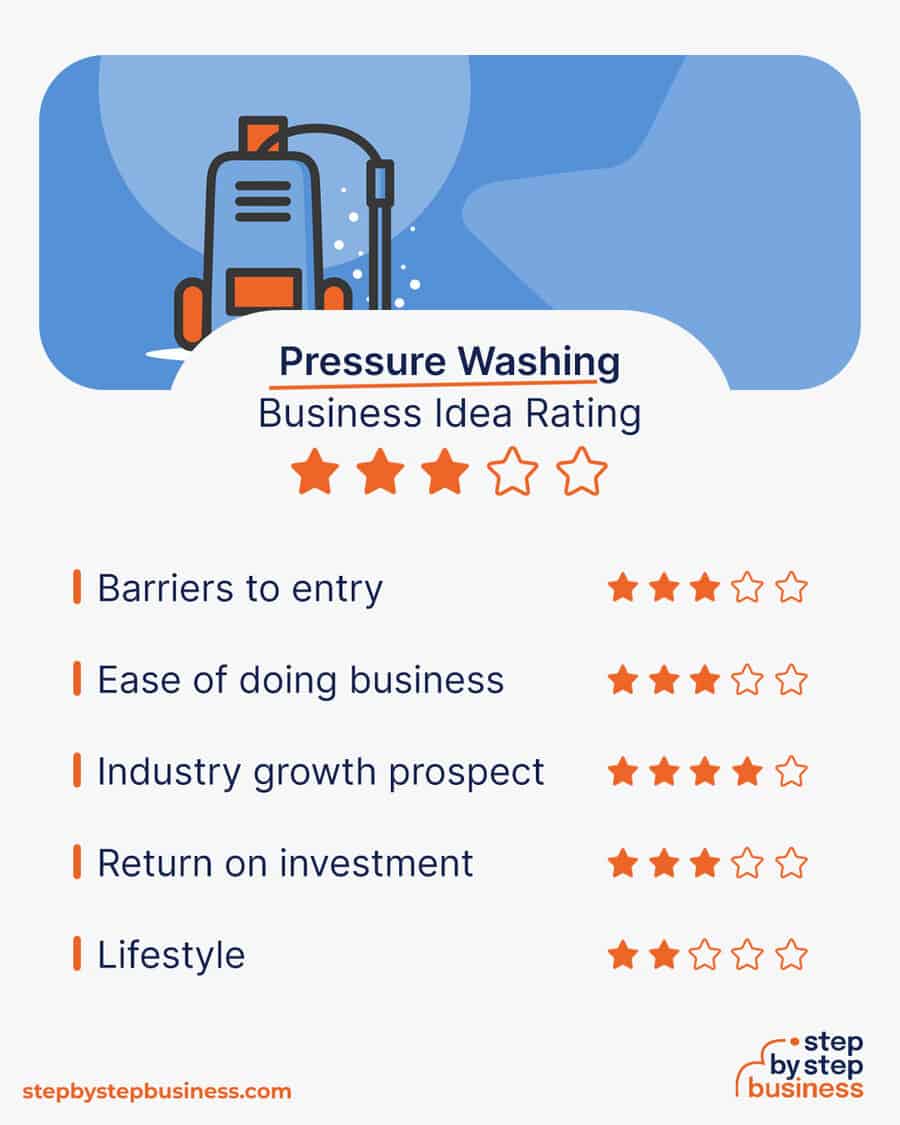



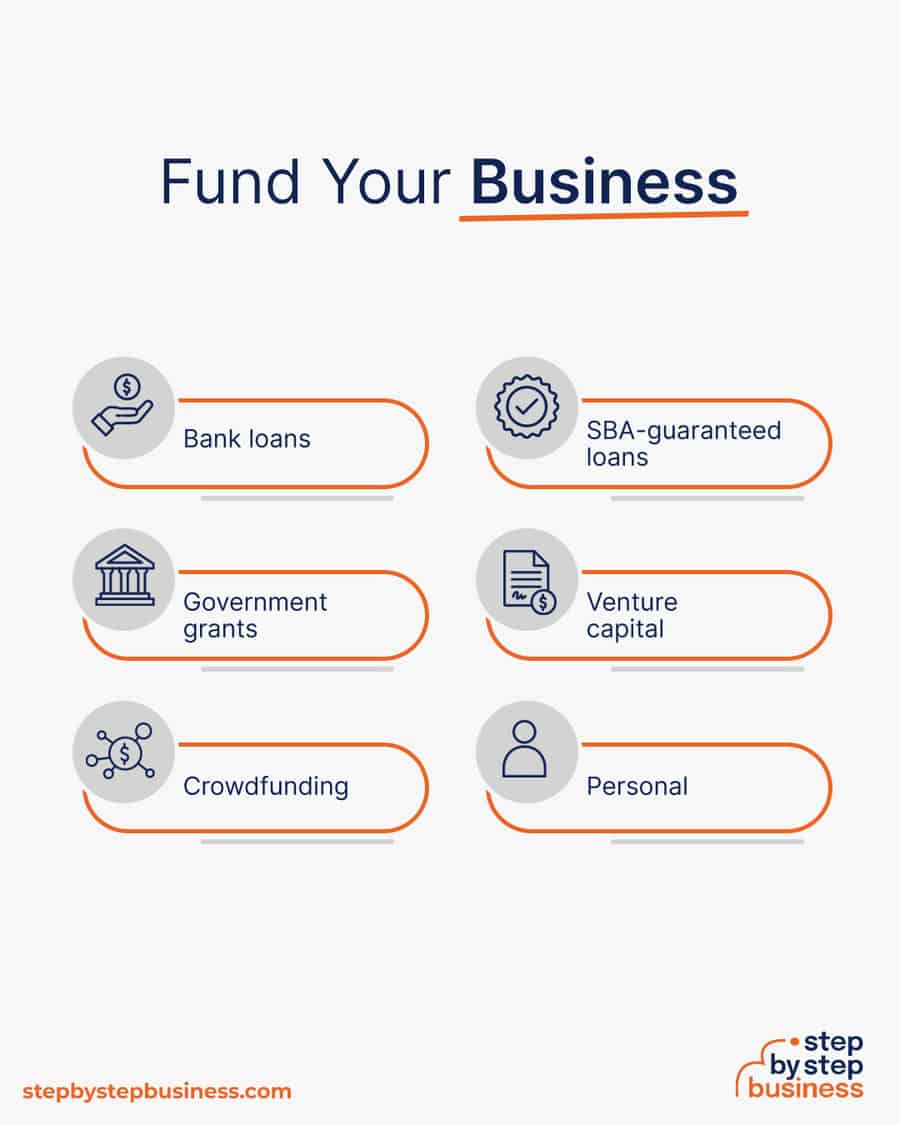









Comments